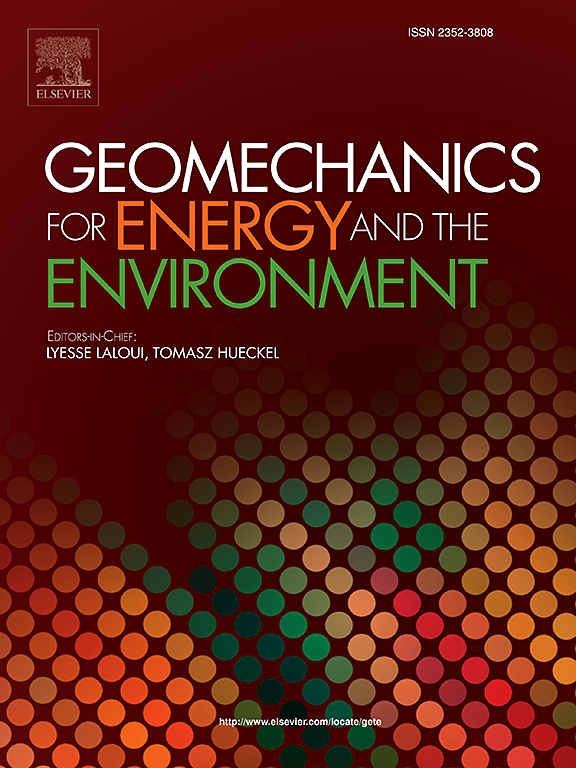Comparative analysis of primary variables selection in modeling non-isothermal two-phase flow: Insights from EBS experiment at Horonobe URL
IF 3.3
2区 工程技术
Q3 ENERGY & FUELS
引用次数: 0
Abstract
This study investigates the influence of primary variables selection on modeling non-isothermal two-phase flow, using numerical simulation based on the full-scale engineered barrier system (EBS) experiment conducted at the Horonobe Underground Research Laboratory (URL) as part of the DECOVALEX-2023 project. A thermal-hydraulic coupled model was validated against analytical solution and experimental data before being applied to simulate the heterogeneous porous media within the EBS. Two different primary variable schemes were compared for discretizing the governing equations, revealing substantial differences in results. Notably, using capillary pressure as a primary variable instead of saturation resulted in closer alignment with analytical solutions and real-world observations. While the modeling work at the Horonobe URL generally exhibited trends consistent with experimental data, discrepancies were attributed to the operational conditions of the heater and the influence of the Excavation Damaged Zone (EDZ) near the borehole.
非等温两相流建模中主要变量选择的比较分析:来自Horonobe的EBS实验的见解
作为DECOVALEX-2023项目的一部分,在Horonobe地下研究实验室(URL)进行了全尺寸工程屏障系统(EBS)实验,通过数值模拟,研究了主要变量选择对非等温两相流建模的影响。利用分析解和实验数据验证了热液耦合模型,然后将其应用于模拟EBS内部的非均质多孔介质。比较了两种不同的主变量方案用于离散控制方程,揭示了结果的实质性差异。值得注意的是,使用毛细管压力作为主要变量,而不是饱和度,结果与分析解和实际观测结果更接近。虽然Horonobe URL的建模工作总体上显示了与实验数据一致的趋势,但差异归因于加热器的运行条件和钻孔附近开挖破坏区(EDZ)的影响。
本文章由计算机程序翻译,如有差异,请以英文原文为准。
求助全文
约1分钟内获得全文
求助全文
来源期刊

Geomechanics for Energy and the Environment
Earth and Planetary Sciences-Geotechnical Engineering and Engineering Geology
CiteScore
5.90
自引率
11.80%
发文量
87
期刊介绍:
The aim of the Journal is to publish research results of the highest quality and of lasting importance on the subject of geomechanics, with the focus on applications to geological energy production and storage, and the interaction of soils and rocks with the natural and engineered environment. Special attention is given to concepts and developments of new energy geotechnologies that comprise intrinsic mechanisms protecting the environment against a potential engineering induced damage, hence warranting sustainable usage of energy resources.
The scope of the journal is broad, including fundamental concepts in geomechanics and mechanics of porous media, the experiments and analysis of novel phenomena and applications. Of special interest are issues resulting from coupling of particular physics, chemistry and biology of external forcings, as well as of pore fluid/gas and minerals to the solid mechanics of the medium skeleton and pore fluid mechanics. The multi-scale and inter-scale interactions between the phenomena and the behavior representations are also of particular interest. Contributions to general theoretical approach to these issues, but of potential reference to geomechanics in its context of energy and the environment are also most welcome.
 求助内容:
求助内容: 应助结果提醒方式:
应助结果提醒方式:


